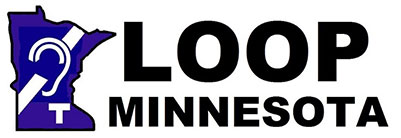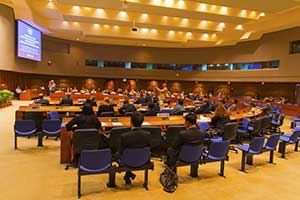Assistive Listening Technologies – Present and Future – to Coexist
We still need it ALL! This conclusion came out of the discussions at the World Congress of the International Federation of Hard of Hearing People (IFHOH). The World Congress was held in September 2022 in Budapest, Hungary.
Worldwide, the ongoing challenge is to help those with hearing loss understand and communicate better in background sound, especially in larger venues. This is when hearing aids and cochlear implants (CIs) are typically not enough. So far, hearing loops & telecoils are the universal, wireless way of providing clearer sound signals and of connecting many people to one sound source, such as a speaker.
As the search for new technology is on, all eyes and ears turn towards Bluetooth®. The new buzzword of the World of Hearing Loss is Auracast™.
A different kind of Bluetooth
Auracast ™ is based on a totally different Bluetooth version from what we have in our hearing instruments right now. This has led to many misunderstandings. In the future, people with hearing loss need re-designed and re-engineered hearing aids and CIs that are Auracast-compatible.
Auracast™ is a wireless, universal broadcast audio using Low Energy Bluetooth as a means of transmission. Besides other helpful and innovative features, it will allow for broadcasting from one Auracast-capable sound source to many Auracast-compatible receivers. Such receivers will include hearing aids, CIs, earphones etc.
On a smaller scale, our “Auracast-capable” phones, TVs, pads and computers will act like mini radio stations. And so, many people can listen at the same time to the same phone call, music or podcast with their “Auracast-compatible” hearing aids and CIs.
But how about large venues, such as conference halls and places of worship? Must they be fitted with Auracast-broadcast technology? At what cost? Obviously, it is a gigantic project to make the world Auracast-accessible and there are many unanswered questions.
One thing is for sure: It will take time, patience and money. Also, we might expect a lengthy transition period. Not everybody will be on board at the same time. This is one of the reasons why present technology will continue to serve us well. We still need it all.
Hearing Now!
Meanwhile, we all need to hear and understand better now. IFHOH recognizes this by stating that “it is important that the globally used and proven systems of Hearing Loops, FM, IR + Telecoils not be dismissed.”
In its “Budapest Declaration,” IFHOH recommends that hearing aid and cochlear implant manufacturers continue to integrate telecoils in their products. “Telecoils need to come with clear user instructions and with clear information and training to the hearing health professionals.“ Also, it will be important for future hearing aids and CIs to include both Telecoil and Auracast™ technologies for some time.
In the end…
Yes, change is coming but it will be a while. For clearer sound in loud places, telecoils and hearing loops are still very much needed. And therefore, assistive listening technologies – present and future – will indeed coexist for quite some time.
Reference: Budapest Declaration.pdf (dropbox.com)
*******
For information on Hearing Loops and Assistive Technologies, contact us on this website.
Also, visit my website where I post blogs on all sorts of issues concerning hearing loss. https://hearing-loss-talk.com/


Comments
Assistive Listening Technologies – Present and Future – to Coexist — No Comments
HTML tags allowed in your comment: <a href="" title=""> <abbr title=""> <acronym title=""> <b> <blockquote cite=""> <cite> <code> <del datetime=""> <em> <i> <q cite=""> <s> <strike> <strong>